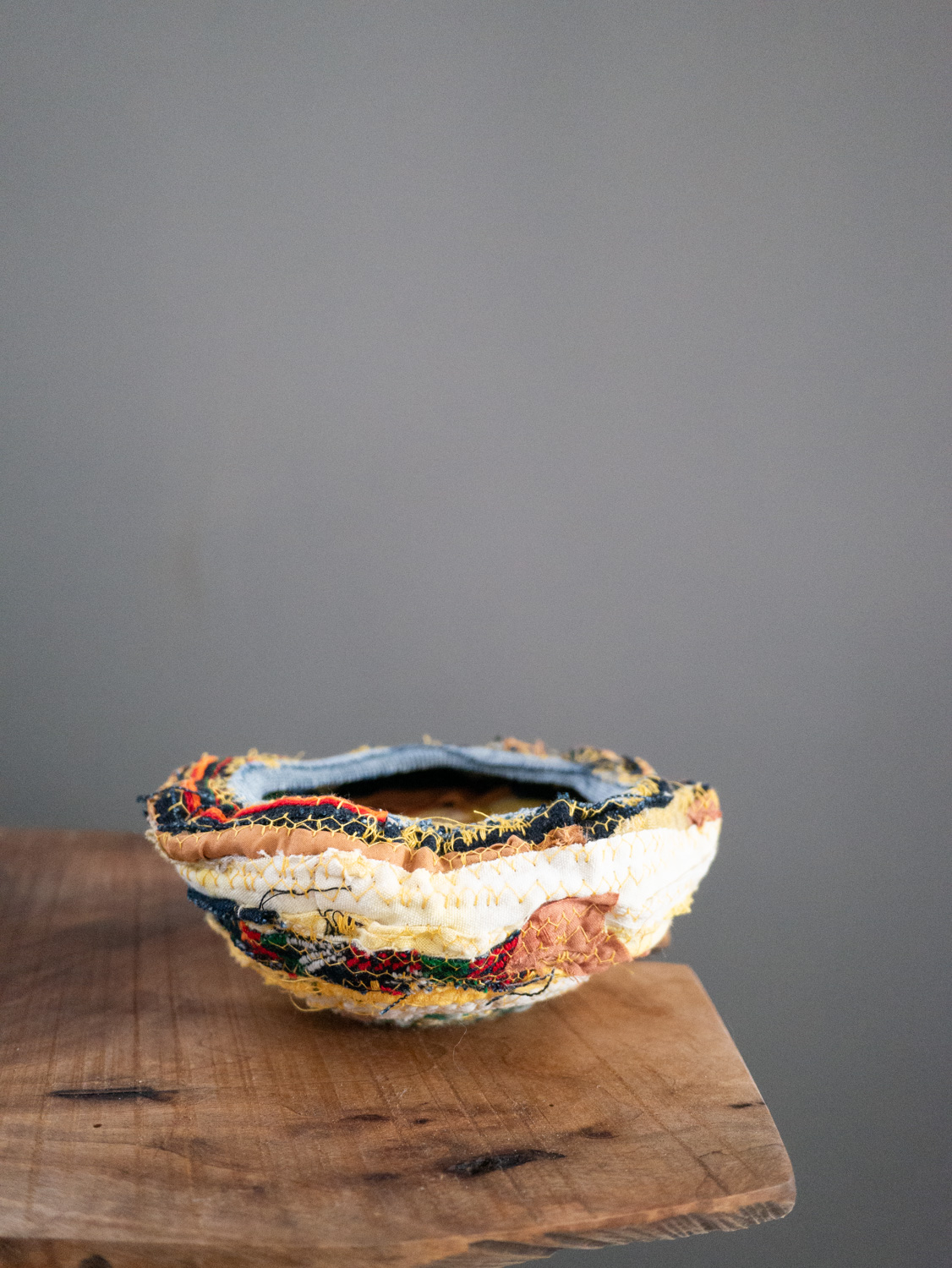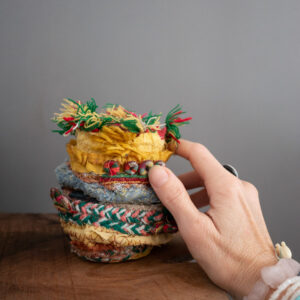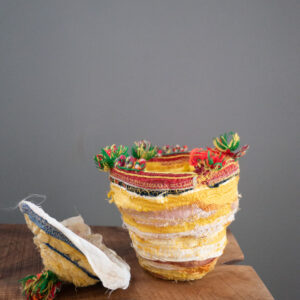Description
The silk remnant panels were dyed during my solo visit to Sa Pa 2018, I went to visit the home of a tribeswoman, and using local natural plants; we created these wondrous colours.
Colour is integral to each tribe’s identity; it is what distinguishes one tribe from another and the creativity in its use is a mark of pride.
Peristrophe bivalvis, also known as lá cẩm in Vietnamese or magenta leaves, is a natural purple dye that is also used for dyeing sticky rice. Dioscorea cirrhosa, known as dye yam in English and nhuộm củ nâu in Vietnamese, is a root plant that looks like a potato, creating a natural brown colour. Strobilanthes cusia or Assam indigo, which is also known as big leaf indigo creates the trademark Sa Pa blue dye. The tribes often locate rare plants, like the nghiên tree. Some of these plants, like Coscinium fenestratum, not only produce an unusual yellow, dye but are also medicinal, used in Ayurveda and other treatments across Asia. Other plants used for dyes include green tea leaves, coffee, Fibraurea recisa (yellow), and Biancaea sappan wood (orange) – thảo







